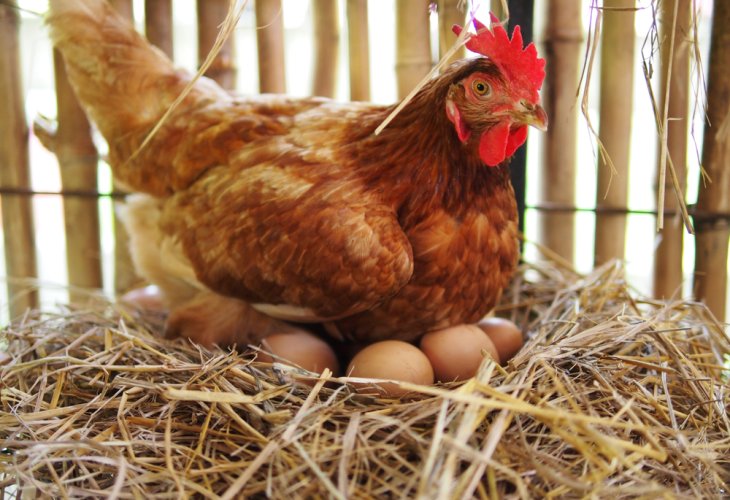In Search of God
The Design Within the Egg: How Every Hatchling Proves Intelligent Creation
From incubation instincts to the chick’s first breath — the astonishing systems hidden inside a single egg
 (photo: shutterstock)
(photo: shutterstock)In the previous article, we explored several remarkable mechanisms within the egg:
Its precise shell thickness
The yolk serving as food for the embryo
The waste sac for safe waste removal
We continue with two more incredible features:
The instinct to incubate
The mechanisms that ensure warmth and hatching
Each of these reveals a level of foresight and design that leaves little room for chance.
4. The Instinct to Incubate
Every species of animal possesses innate behaviors written into its DNA — coded commands that instruct parents how to protect and care for their young. These are not learned but pre-programmed biological instincts.
For example, in waterfowl such as ducks and geese, there is an instinct to pluck the feathers from their chest so that their warm skin touches the eggs directly. Body heat alone is not enough; thus, many birds also instinctively rotate their eggs twice daily to ensure even warmth on all sides.
Building a nest is itself an astonishing feat of encoded knowledge. Birds gather twigs and materials, forming structures of the exact shape and size needed — behavior requiring countless pre-written “instructions” in their genetic code.
Reptiles, too, demonstrate extraordinary instinct. The Galápagos land iguana, for instance, travels over a kilometer of dangerous terrain to lay her eggs in warm volcanic ash, which acts as a natural incubator. She digs a nest for days, lays around twenty eggs, buries them carefully, and guards them for several days against predators.
Such behaviors are not random; they are programmed sequences vital for survival. Even the slightest deviation would lead to extinction.
A hen could just as easily ignore her eggs, trample them, kick them away, or even peck at them. Only a specific behavioral “code” — to sit, warm, and protect the eggs, ensures the next generation survives. Without incubation, there would be no chickens in the world. Without nest-building, eggs would fall from trees and shatter.
From the very first reptile and the very first bird, these precise instincts had to exist in full for the species to continue. It’s all or nothing.
5. How the Chick Receives Warmth
While the mother hen provides external heat, an incredible internal mechanism ensures that the embryo inside the egg always faces the warmth.
Have you ever noticed the small white dot on the egg yolk? That’s the embryo cell. During frying, you can see it float upward. Inside the intact egg, no matter which way you turn it, the yolk automatically rotates so that the embryo tilts upward toward the hen’s body heat.
This happens through an elegant design: the yolk is suspended by two spiral protein cords called chalazae. These coiled “ropes” allow the yolk to spin freely yet remain centered, always positioning the embryo toward the top.
This ensures the developing chick receives the heat it needs. Without this mechanism, the embryo would not develop properly, and no chick would ever hatch.
6. How the Chick Breaks Free from the Egg
At last, the moment of truth: the chick is fully formed and ready to enter the world, but trapped inside a hard shell. How can it possibly break free?
For this, the Creator equipped it with a special temporary tool — a tiny pointed projection on its beak known as the “egg tooth.” This small structure acts like a built-in can opener, allowing the chick to chip away at the shell from the inside until it cracks open. Shortly after hatching, this “tooth” disappears, merging into the beak.
It’s clear that even the first egg in history needed to contain this feature. Without it, the chick would die inside, and the species would never survive. Sea creatures, by contrast, use chemical processes to dissolve their egg membranes — another brilliant example of purposeful adaptation.
Such perfectly coordinated systems could not emerge step by step. They had to exist from the very beginning, which is evidence of intentional creation, not random mutation.
Scientists Acknowledge the Dilemma
Even evolutionary biologists have struggled with this question. The IBM publication “Sociobiology – The Nature in Man” (1981, p. 31) admits: “Each mutation by itself has no selective value. For example, the conquest of land by vertebrates required a dramatic transformation in their eggs. Exposed to air, the eggs needed shells to prevent dehydration, yolk and albumin for nourishment, a waste sac to collect metabolic by-products, and a hatching mechanism — a horn or chemical secretions — to break the shell. If these changes were not coordinated and simultaneous, they would be useless or even fatal. A hard shell without a hatching mechanism, for instance, would kill the embryo. To assume these changes were pre-coordinated implies a predetermined plan, which contradicts Darwinian theory. But to assume they all happened at once, by chance, defies statistical possibility.”
Evolution alone cannot explain the egg. Every part of the system — from shell to yolk, from instincts to hatchling, had to be designed together from the start.
The Lesson Within the Egg
Across thousands of species, from birds to reptiles, eggs reveal astonishingly complex mechanisms — each uniquely adapted and flawlessly timed.
Whoever studies them closely is compelled to recognize: this is not chaos, but coordination. Not accident, but artistry. As one wise friend once put it: “If the non-believer truly understood what he has to believe in to remain a non-believer — he would become a believer.”
Even an egg — simple, fragile, and humble, proclaims the same truth: the world was designed by a Creator.

